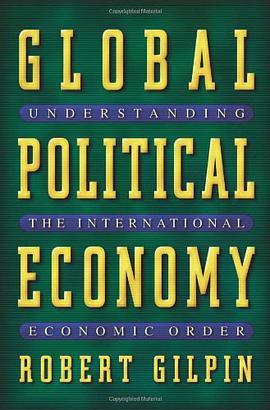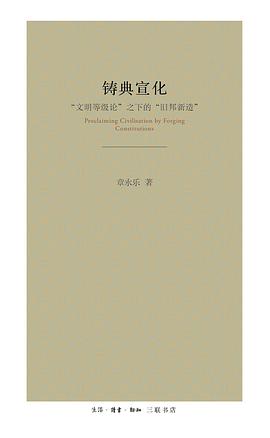Global Political Economy
内容简介
This book is the eagerly awaited successor to Robert Gilpin's 1987 The Political Economy of International Relations, the classic statement of the field of international political economy that continues to command the attention of students, researchers, and policymakers. The world economy and political system have changed dramatically since the 1987 book was published. The end of the Cold War has unleashed new economic and political forces, and new regionalisms have emerged. Computing power is increasingly an impetus to the world economy, and technological developments have changed and are changing almost every aspect of contemporary economic affairs. Gilpin's Global Political Economy considers each of these developments. Reflecting a lifetime of scholarship, it offers a masterful survey of the approaches that have been used to understand international economic relations and the problems faced in the new economy.
Gilpin focuses on the powerful economic, political, and technological forces that have transformed the world. He gives particular attention to economic globalization, its real and alleged implications for economic affairs, and the degree to which its nature, extent, and significance have been exaggerated and misunderstood. Moreover, he demonstrates that national policies and domestic economies remain the most critical determinants of economic affairs. The book also stresses the importance of economic regionalism, multinational corporations, and financial upheavals.
Gilpin integrates economic and political analysis in his discussion of "global political economy." He employs the conventional theory of international trade, insights from the theory of industrial organization, and endogenous growth theory. In addition, ideas from political science, history, and other disciplines are employed to enrich understanding of the new international economic order. This wide-ranging book is destined to become a landmark in the field.
......(更多)
作者简介
Robert G. Gilpin is the Dwight D. Eisenhower professor of Public and International Affairs, Emeritus. He taught at Princeton University, in the Department of Politics and the Woodrow Wilson School, from 1962 to 1998. His specialties included science and politics, American foreign policy, theories of international relations, international political economy, and the political and economic integration of Western Europe.
His published books include American Scientists and Nuclear Weapons Policy, France in the Age of the Scientific State, US Power and the Multinational Corporation, War and Change in World Politics, The Political Economy of International Relations, The Challenge of Global Capitalism, and Global Political Economy. These books have been translated into a number of languages throughout Europe and Asia, and some have received awards for noteworthy scholarship.
Gilpin's present research interests are in the application of realist thinking to contemporary American policies in the Middle East.
......(更多)
目录
List of Abbreviations and Acronyms ix
Preface xi
ONE. The New Global Economic Order 3
Changes in the World Economy 5
Intellectual Perspectives 13
My Perspective: State-centric Realism 15
Purpose of Economic Activity 23
Conclusion 24
TWO. The Nature of Political Economy 25
What You Seek Is What You Find 31
The Nature of an Economy 38
Embeddedness of the Economy 41
Conclusion 45
THREE. The Neoclassical Conception of the Economy 46
The Discipline of Neoclassical Economics 46
Nature of a Market 54
Method of Comparative Statics 57
Intellectual Limitations 60
Economists and Public Policy 69
Comparison of Economics and Political Economy 74
Conclusion 76
FOUR. The Study of International Political Economy 77
Distribution of Wealth and Economic Activities 78
National Autonomy 80
The Politics of International Regimes 82
Theory of Hegemonic Stability 93
Governance of the Global Economy 97
Conclusion 102
FIVE. New Economic Theories 103
Change and Neoclassical Economics 104
World View of the New Theories 106
The New Theories 108 Conclusion 127 SIX. The Political Significance of the New Economic Theories 129
National Governments and Domestic Economies 129
Oligopoly and Power in Economic Outcomes 132
Technological Innovation 135
Convergent and Divergent Economic Growth 141
Conclusion 147
SEVEN. National Systems of Political Economy 148
Differences among National Economies 149
The American System of Market-Oriented Capitalism 150
The Japanese System of Developmental Capitalism 156
The German System of "Social Market" Capitalism 168
Significance of National Differences 174
Is One System Superior to the Others? 175
Do Nations Compete with One Another? 180
Convergence, Harmonization, or Mutual Recognition? 183
Conclusion 195
EIGHT. The Trading System 196
The Debate over Free Trade 198
Trade and the Economy 202
Revisions of Conventional Trade Theory 206
Postwar Trade Regime 217
The Uruguay Round and World Trade Organization 221
New Threats to an Open Trading System 224
Conclusion 232
NINE. The International Monetary System 234
The Postwar International Monetary System 235
The End of Fixed Exchange Rates 238
The Financial Revolution and Monetary Affairs 239
Embedded Technical and Political Issues 242
Devising an International Monetary System 248
Reform of International Monetary Affairs 250
Unity or Fragmentation of the Monetary System? 255
Few or Many National Currencies? 258
Conclusion 259
TEN. The International Financial System 261
Partial Globalization of International Finance 261
Nature of Financial Crises 264
The East Asian Financial Crisis 267
Controversy over Regulation of International Finance 271
Conclusion 277
ELEVEN. The State and the Multinationals 278
Explanations of FDI and the MNC 279
The Multinationals and the International Economy 289
Increased Regionalization of Services and Manufacturing 292
Debate over the MNC and the Nation-State 294
An International Regime for FDI and MNCs 300
Do Global Corporations Pose a Threat? 302
Conclusion 304
TWELVE. The State and Economic Development 305
The Rise and Demise of Development Economics 306
Triumph of Neoliberalism 309
The Debt Crisis and Structural Adjustment 313
Theory of the "Developmental State" 316
The East Asian Miracle Project 321
The East Asian Financial/Economic Crisis 329
The Future of the Developmental State 331
The Transitional Economies 333
Conclusion 339
THIRTEEN. The Political Economy of Regional Integration 341
Economic Theories 344
Political Theories 348
An Eclectic Approach 358
Conclusion 361
FOURTEEN. The Nation-State in the Global Economy 362
The Limited Nature of Economic Globalization 364
Alleged Consequences of Economic Globalization 366
Effectiveness of Macroeconomic Policy 369
The Need for a Historical Perspective 375
Conclusion 376
FIFTEEN. Governing the Global Economy 377
Neoliberal Institutionalism 379
The New Medievalism 390
Transgovernmentalism 398
Governance for What? 400
Conclusion 402
Select Bibliography 403
Index 411
......(更多)
读书文摘
尽管如此,大多数贸易仍是在美国、欧洲和日本——以及东亚、拉丁美洲和其他地方一些新兴市场间进行的。大多数发展中国家,除了出口食品和原材料外,仍处于世界贸易的外围。
......(更多)






